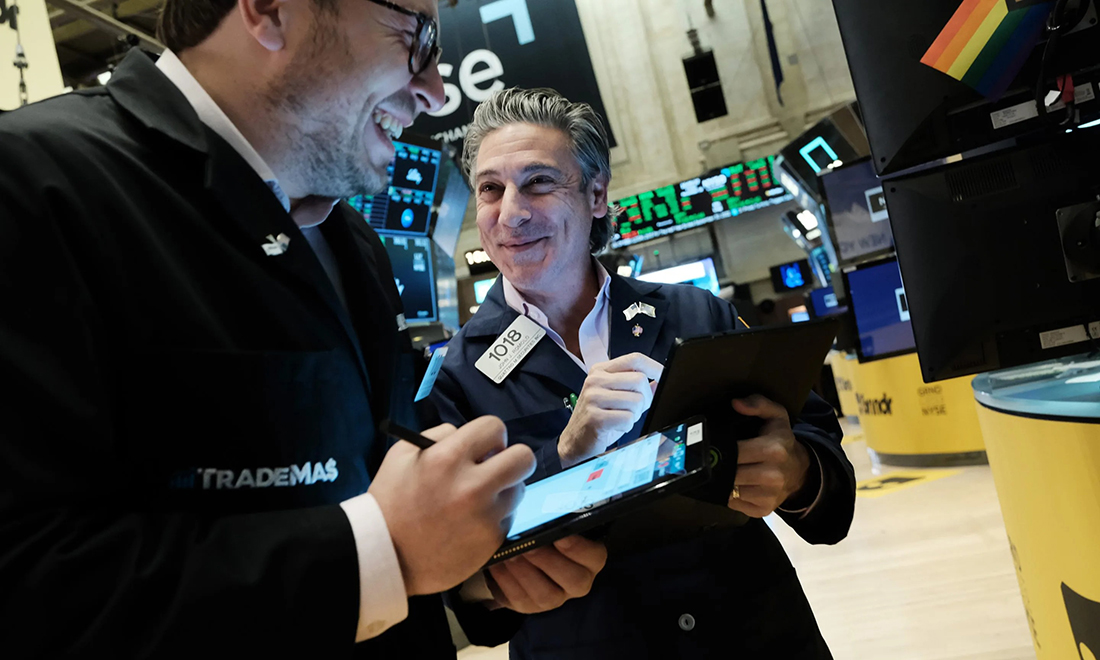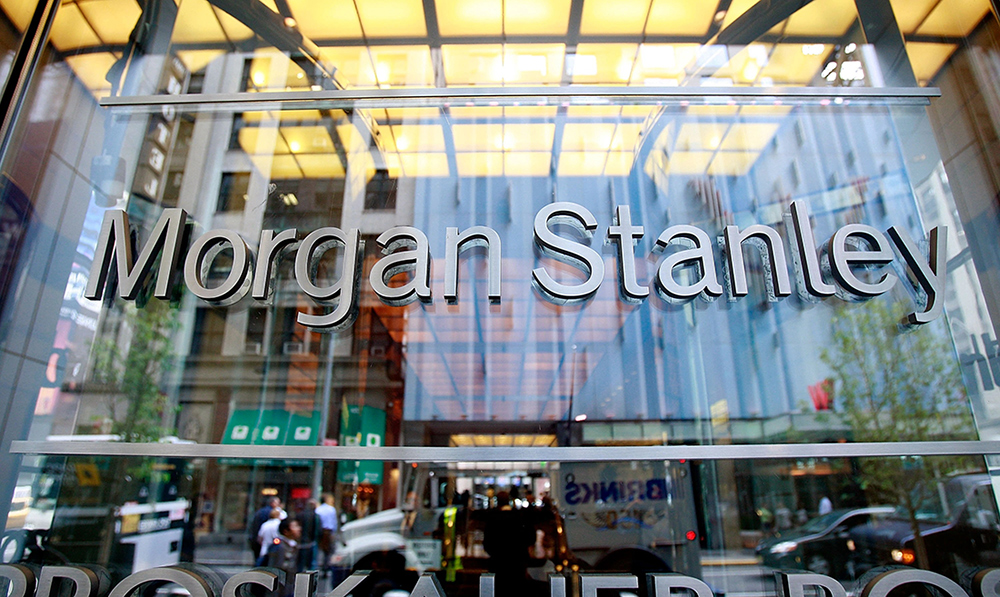
通常情況下,大多數人不會認真考慮美聯儲(Federal Reserve),只有少數人會考慮該機構給投資者帶來的影響。但在過去的幾年里,這種情況開始發生變化。許多經濟學家和敏銳的市場觀察人士認為,美聯儲和其他央行在大金融危機(Great Financial Crisis)后實施多年的寬松貨幣政策造就了“萬物皆泡沫”,而現在,“萬物泡沫”正在破裂。
萬物皆泡沫的想法并不新鮮。在2022年股市陷入困境之前的幾年里,包括投資傳奇人物杰里米·格蘭瑟姆在內的華爾街領袖人物就一直警告說,“超級泡沫”正在醞釀中。該觀點認為,近零利率和量化寬松政策(QE)——美聯儲將購買抵押貸款支持證券和政府債券,以促進貸款和投資——將投資者推向風險更高的投資,允許不可持續的商業模式在低息貸款的基礎上蓬勃發展,并且助長了疫情房產熱(Pandemic Housing Boom)。

目前還為時尚早,但現在回想起來,在這個低息貨幣時代出現了許多荒誕不經的金融預測。隨著通貨膨脹繼續肆虐,人們對經濟衰退的擔憂加劇,對美國人而言,情況并不樂觀。但金融界也有一線希望。萬物泡沫帶來了歷史上最荒謬和滑稽的預測。
從加密貨幣專家、對沖基金經理到經濟學家和投資銀行,低息貨幣時代多得是相信好時光永遠不會結束的多頭。下面讓我們來看看他們一些最荒誕的預測。
比特幣多頭
2020年和2021年的加密貨幣熱潮是前所未有的。從2020年1月到2021年11月加密貨幣熱潮達到頂峰,該行業的總價值增長到3萬億美元以上,比特幣(Bitcoin)的價格飆升了約800%。
加密貨幣的忠實信徒們確信,派對才剛剛開始。億萬富翁風險投資家蒂姆·德雷珀在2021年6月表示,比特幣將在2022年年底達到25萬美元。他向美國消費者新聞與商業頻道(CNBC)的杰德·希皮奧尼保證:“我認為我在這一點上是正確的。”
比特幣最終在2022年年底收盤于略高于16,500美元,但就在12月,德雷珀再次聲稱比特幣將達到25萬美元,這次他稱比特幣將在2023年中期達到25萬美元。
德雷珀在接受美國消費者新聞與商業頻道采訪時說:“我預計人們會轉向比特幣這樣的優質、去中心化加密貨幣,一些非主流加密貨幣將成為遺跡。”
蒂姆·德雷柏沒有回應《財富》雜志的置評請求。
德雷珀并不是唯一一個在低息貨幣時代跳上比特幣列車并做出過高預測的領軍人物。方舟投資(ARK Invest)的凱茜·伍德是首位通過比特幣投資信托(Bitcoin Investment Trust)獲得比特幣敞口的公共資產經理,這是她2015年跟蹤科技指數的交易所交易基金(ETFs)的一部分。

這一賭注導致伍德面臨來自同行的嚴厲批評,但除了2018年短暫的加密貨幣寒冬外,到2021年11月,比特幣的價格飆升至6.5萬美元以上,這一賭注得到了回報。
伍德確信,好時光將持續整個牛市。2020年11月,她告訴《巴倫周刊》(Barron’s),到2026年,機構投資者對加密貨幣的投資將把比特幣的價格推高至50萬美元,并在比特幣價格下跌時反復“逢低買入”。伍德甚至在2020年2月的一次采訪中告訴《環球郵報》(The Globe and Mail),比特幣是她退休賬戶中“最大的頭寸之一”。
即使在2022年年初,比特幣價格從6.5萬美元以上的高點跌至略低于5萬美元的時候,方舟投資的首席執行官仍然看漲比特幣。她在方舟投資的“2022年大創意”(Big Ideas 2022)年度研究報告中認為,到2030年,領先的加密貨幣將達到100萬美元。
從那以后,比特幣的價格下跌了60%以上,但伍德和她的團隊并沒有倉皇失措,他們仍然認為他們的預測是合理的。
伍德在2022年12月對彭博社(Bloomberg)表示:“我們認為比特幣能夠出淤泥而不染。”她認為,在比特幣經受加密貨幣寒冬的“戰火洗禮”后,機構投資者最終將買入比特幣。
凱西·伍德沒有回應《財富》雜志的置評請求。
Fundstrat Global Advisors的研究主管湯姆·李此前曾經擔任摩根大通(JPMorgan)的首席股票策略師,在華爾街工作了超過25年,他也一直看好比特幣。在2022年年初,他預測比特幣將在未來幾年達到20萬美元。
盡管最近比特幣下跌,他承認這對投資者來說是“可怕的”,但他在2022年11月接受美國消費者新聞與商業頻道采訪時稱,他仍然相信比特幣將走出目前的下跌趨勢,并達到20萬美元的目標值。但是,盡管許多加密貨幣預測者堅持他們的過高估值,華爾街已經撤回了他們的一些預測。
湯姆·李沒有回應《財富》雜志的置評請求。
股市預估過高
在低息貨幣時代,投資銀行做出了一些相當驚人的預測。在新冠疫情期間股市飆升,投資者回報率達到28%之后,華爾街相信,2022年股市將放緩,但不會達到實際放緩的程度。
投資銀行預計,到2022年年底,標準普爾500指數(S&P 500)收于4,825點,全年漲幅僅為1%。相反,該藍籌股指數下跌了約20%。
在研究受益于疫情趨勢的成長型股票的價格目標時,投資銀行的看漲情緒(或許是毫無根據的)尤其明顯。例如,隨著二手車價格升至創紀錄高點,在線二手車零售商Carvana在新冠疫情期間股價飆升。
該公司可以充分利用消費者在新冠疫情期間無法或不愿意親自購買車輛的情況,導致一些分析師給出了令人難以置信的看漲預測。
2022年1月,摩根士丹利(Morgan Stanley)的汽車分析師亞當·喬納斯將Carvana稱為“汽車零售業頂級大鱷”,并將該股的12個月價格目標定為430美元。自那以后,這家在線汽車零售商的股價暴跌超過97%,跌至僅4.48美元。一些分析師認為,投資者還將遭受更多痛苦。

摩根士丹利沒有回應《財富》雜志的置評請求。
New Construct的首席執行官戴維·特雷納在2022年6月警告投資者,Carvana正在以不可持續的速度燒錢,可能無法幸存下來。
特雷納在接受《財富》雜志采訪時指出:“對于那些能夠輕松獲得資金、維持運營的燒錢公司來說,時間已經所剩無幾。這些‘僵尸’公司面臨破產的風險。”
Coinbase是過去幾年華爾街興起的熱潮的另一例子。當這家加密貨幣交易所于2021年4月上市時,股價從250美元的參考價飆升至每股381美元。
美國消費者新聞與商業頻道的吉姆·克萊默曾經是對沖基金經理,他在Coinbase上市后在推特(Twitter)上表示,他“看好Coinbase的股價,認為Coinbase的股價將漲到475美元。”他并不是唯一一個這樣想的人,在2021年年初,投資銀行對該交易所的平均價格目標超過每股400美元。
然而,自那以后,Coinbase的股價在加密貨幣寒冬中下跌了90%以上。克萊默已經改變了主意,他在12月13日的推文中說,他“不會買入Coinbase的股票”,稱現在“還為時過早”。
美國消費者新聞與商業頻道沒有回應《財富》雜志的置評請求。
低息貨幣時代可能導致許多預測者認為,無論估值如何,資產價格都將繼續飆升,但事實證明,2022年的情況給他們敲響了警鐘。華爾街分析師大幅下調了許多新冠疫情期間的股市寵兒的價格目標。投資咨詢公司CapWealth的首席投資官蒂姆·帕利亞拉在2022年12月告訴《財富》雜志,對市場和預測者而言,這是一個新時代。
帕利亞拉說:“我們將推翻許多預測。從商業地產到投資大眾如何看待加密貨幣等事物,一切都將進行大量重估。”(財富中文網)
譯者:中慧言-王芳
通常情況下,大多數人不會認真考慮美聯儲(Federal Reserve),只有少數人會考慮該機構給投資者帶來的影響。但在過去的幾年里,這種情況開始發生變化。許多經濟學家和敏銳的市場觀察人士認為,美聯儲和其他央行在大金融危機(Great Financial Crisis)后實施多年的寬松貨幣政策造就了“萬物皆泡沫”,而現在,“萬物泡沫”正在破裂。
萬物皆泡沫的想法并不新鮮。在2022年股市陷入困境之前的幾年里,包括投資傳奇人物杰里米·格蘭瑟姆在內的華爾街領袖人物就一直警告說,“超級泡沫”正在醞釀中。該觀點認為,近零利率和量化寬松政策(QE)——美聯儲將購買抵押貸款支持證券和政府債券,以促進貸款和投資——將投資者推向風險更高的投資,允許不可持續的商業模式在低息貸款的基礎上蓬勃發展,并且助長了疫情房產熱(Pandemic Housing Boom)。
目前還為時尚早,但現在回想起來,在這個低息貨幣時代出現了許多荒誕不經的金融預測。隨著通貨膨脹繼續肆虐,人們對經濟衰退的擔憂加劇,對美國人而言,情況并不樂觀。但金融界也有一線希望。萬物泡沫帶來了歷史上最荒謬和滑稽的預測。
從加密貨幣專家、對沖基金經理到經濟學家和投資銀行,低息貨幣時代多得是相信好時光永遠不會結束的多頭。下面讓我們來看看他們一些最荒誕的預測。
比特幣多頭
2020年和2021年的加密貨幣熱潮是前所未有的。從2020年1月到2021年11月加密貨幣熱潮達到頂峰,該行業的總價值增長到3萬億美元以上,比特幣(Bitcoin)的價格飆升了約800%。
加密貨幣的忠實信徒們確信,派對才剛剛開始。億萬富翁風險投資家蒂姆·德雷珀在2021年6月表示,比特幣將在2022年年底達到25萬美元。他向美國消費者新聞與商業頻道(CNBC)的杰德·希皮奧尼保證:“我認為我在這一點上是正確的。”
比特幣最終在2022年年底收盤于略高于16,500美元,但就在12月,德雷珀再次聲稱比特幣將達到25萬美元,這次他稱比特幣將在2023年中期達到25萬美元。
德雷珀在接受美國消費者新聞與商業頻道采訪時說:“我預計人們會轉向比特幣這樣的優質、去中心化加密貨幣,一些非主流加密貨幣將成為遺跡。”
蒂姆·德雷柏沒有回應《財富》雜志的置評請求。
德雷珀并不是唯一一個在低息貨幣時代跳上比特幣列車并做出過高預測的領軍人物。方舟投資(ARK Invest)的凱茜·伍德是首位通過比特幣投資信托(Bitcoin Investment Trust)獲得比特幣敞口的公共資產經理,這是她2015年跟蹤科技指數的交易所交易基金(ETFs)的一部分。
這一賭注導致伍德面臨來自同行的嚴厲批評,但除了2018年短暫的加密貨幣寒冬外,到2021年11月,比特幣的價格飆升至6.5萬美元以上,這一賭注得到了回報。
伍德確信,好時光將持續整個牛市。2020年11月,她告訴《巴倫周刊》(Barron’s),到2026年,機構投資者對加密貨幣的投資將把比特幣的價格推高至50萬美元,并在比特幣價格下跌時反復“逢低買入”。伍德甚至在2020年2月的一次采訪中告訴《環球郵報》(The Globe and Mail),比特幣是她退休賬戶中“最大的頭寸之一”。
即使在2022年年初,比特幣價格從6.5萬美元以上的高點跌至略低于5萬美元的時候,方舟投資的首席執行官仍然看漲比特幣。她在方舟投資的“2022年大創意”(Big Ideas 2022)年度研究報告中認為,到2030年,領先的加密貨幣將達到100萬美元。
從那以后,比特幣的價格下跌了60%以上,但伍德和她的團隊并沒有倉皇失措,他們仍然認為他們的預測是合理的。
伍德在2022年12月對彭博社(Bloomberg)表示:“我們認為比特幣能夠出淤泥而不染。”她認為,在比特幣經受加密貨幣寒冬的“戰火洗禮”后,機構投資者最終將買入比特幣。
凱西·伍德沒有回應《財富》雜志的置評請求。
Fundstrat Global Advisors的研究主管湯姆·李此前曾經擔任摩根大通(JPMorgan)的首席股票策略師,在華爾街工作了超過25年,他也一直看好比特幣。在2022年年初,他預測比特幣將在未來幾年達到20萬美元。
盡管最近比特幣下跌,他承認這對投資者來說是“可怕的”,但他在2022年11月接受美國消費者新聞與商業頻道采訪時稱,他仍然相信比特幣將走出目前的下跌趨勢,并達到20萬美元的目標值。但是,盡管許多加密貨幣預測者堅持他們的過高估值,華爾街已經撤回了他們的一些預測。
湯姆·李沒有回應《財富》雜志的置評請求。
股市預估過高
在低息貨幣時代,投資銀行做出了一些相當驚人的預測。在新冠疫情期間股市飆升,投資者回報率達到28%之后,華爾街相信,2022年股市將放緩,但不會達到實際放緩的程度。
投資銀行預計,到2022年年底,標準普爾500指數(S&P 500)收于4,825點,全年漲幅僅為1%。相反,該藍籌股指數下跌了約20%。
在研究受益于疫情趨勢的成長型股票的價格目標時,投資銀行的看漲情緒(或許是毫無根據的)尤其明顯。例如,隨著二手車價格升至創紀錄高點,在線二手車零售商Carvana在新冠疫情期間股價飆升。
該公司可以充分利用消費者在新冠疫情期間無法或不愿意親自購買車輛的情況,導致一些分析師給出了令人難以置信的看漲預測。
2022年1月,摩根士丹利(Morgan Stanley)的汽車分析師亞當·喬納斯將Carvana稱為“汽車零售業頂級大鱷”,并將該股的12個月價格目標定為430美元。自那以后,這家在線汽車零售商的股價暴跌超過97%,跌至僅4.48美元。一些分析師認為,投資者還將遭受更多痛苦。
摩根士丹利沒有回應《財富》雜志的置評請求。
New Construct的首席執行官戴維·特雷納在2022年6月警告投資者,Carvana正在以不可持續的速度燒錢,可能無法幸存下來。
特雷納在接受《財富》雜志采訪時指出:“對于那些能夠輕松獲得資金、維持運營的燒錢公司來說,時間已經所剩無幾。這些‘僵尸’公司面臨破產的風險。”
Coinbase是過去幾年華爾街興起的熱潮的另一例子。當這家加密貨幣交易所于2021年4月上市時,股價從250美元的參考價飆升至每股381美元。
美國消費者新聞與商業頻道的吉姆·克萊默曾經是對沖基金經理,他在Coinbase上市后在推特(Twitter)上表示,他“看好Coinbase的股價,認為Coinbase的股價將漲到475美元。”他并不是唯一一個這樣想的人,在2021年年初,投資銀行對該交易所的平均價格目標超過每股400美元。
然而,自那以后,Coinbase的股價在加密貨幣寒冬中下跌了90%以上。克萊默已經改變了主意,他在12月13日的推文中說,他“不會買入Coinbase的股票”,稱現在“還為時過早”。
美國消費者新聞與商業頻道沒有回應《財富》雜志的置評請求。
低息貨幣時代可能導致許多預測者認為,無論估值如何,資產價格都將繼續飆升,但事實證明,2022年的情況給他們敲響了警鐘。華爾街分析師大幅下調了許多新冠疫情期間的股市寵兒的價格目標。投資咨詢公司CapWealth的首席投資官蒂姆·帕利亞拉在2022年12月告訴《財富》雜志,對市場和預測者而言,這是一個新時代。
帕利亞拉說:“我們將推翻許多預測。從商業地產到投資大眾如何看待加密貨幣等事物,一切都將進行大量重估。”(財富中文網)
譯者:中慧言-王芳
Most people don’t think about the Federal Reserve very often, and only a select few contemplate the effects that the U.S. central bank has on investors. But over the past few years, that’s begun to change. Many economists and keen market watchers are making the case that years of loose monetary policies from the Fed and other central banks following the Great Financial Crisis (GFC) helped create an “everything bubble”—and now it’s popping.
The everything bubble idea isn’t new. For years before 2022’s stock market woes, leading minds on Wall Street including the investing legend Jeremy Grantham warned about a brewing “superbubble.” The idea is that near-zero interest rates and quantitative easing (QE)—a policy where the Fed would buy mortgage-backed securities and government bonds to boost lending and investment in the economy—pushed investors toward riskier investments, allowed unsustainable business models to thrive on cheap debt, and helped fuel the Pandemic Housing Boom.
It’s early days, but in retrospect a lot of outlandish financial predictions accompanied this era of easy money. And the fallout for Americans hasn’t been pretty, as inflation continues to rage and recession fears mount. But there is a silver lining for the finance community. The everything bubble provided some of the most ridiculous—and hilarious—forecasts in history.
From cryptocurrency experts and hedge fund managers to economists and investment banks, the easy money era was filled with bulls who believed the good times would never end. Here’s a look at some of their strangest calls.
The Bitcoin bulls
The cryptocurrency boom of 2020 and 2021 was unprecedented. Between January 2020 and the peak of the crypto fervor in November 2021, the industry’s total value grew to over $3 trillion and Bitcoin prices soared roughly 800%.
The crypto faithful were sure that the party was just beginning. Billionaire venture capitalist Tim Draper said in June 2021 that Bitcoin would hit $250,000 by the end of 2022. “I think I’m going to be right on this one,” he assured CNBC’s Jade Scipioni.
Bitcoin ended up finishing 2022 just above $16,500, but just in December, Draper repeated his call for Bitcoin to hit $250,000—this time he said it would be by the middle of 2023.
“I expect a flight to quality and decentralized crypto like bitcoin, and for some of the weaker coins to become relics,” Draper told CNBC.
Tim Draper did not respond to Fortune’s request for comment.
Draper wasn’t the only leading figure to jump on the Bitcoin train during the easy money era and make lofty forecasts either. ARK Invest’s Cathie Wood was the first public asset manager to gain exposure to Bitcoin via the Bitcoin Investment Trust (GBTC) as a part of her tech-focused exchange-traded ETFs in 2015.
The bet led Wood to face serious criticism from her peers, but barring a brief crypto winter in 2018, it paid off as Bitcoin’s price soared to over $65,000 by November 2021.
Wood was sure that the good times would last throughout the bull market. In November 2020, she told Barron’s that institutional adoption of crypto would drive Bitcoin’s price to $500,000 by 2026 and repeatedly “bought the dip” whenever Bitcoin prices fell. Wood even told The Globe and Mail in a February 2020 interview that Bitcoin was “one of the largest positions” in her retirement account.
The ARK Invest CEO remained bullish even at the start of 2022, when Bitcoin prices had fallen from their highs of over $65,000 to just under $50,000. She argued that the leading cryptocurrency would touch $1 million by 2030 in ARK’s “Big Ideas 2022” annual research report.
Since then Bitcoin’s price has dropped more than 60%, but Wood and her team aren’t fazed, and still believe that their prediction is fair.
“We think Bitcoin is coming out of this smelling like a rose,” Wood told Bloomberg in December, arguing that institutions will eventually buy into Bitcoin after it is “battle tested” by the crypto winter.
Cathie Wood did not respond to Fortune’s request for comment.
Tom Lee, head of research at Fundstrat Global Advisors, who previously served as chief equity strategist at JPMorgan and spent over 25 years on Wall Street, has also been a perennial Bitcoin bull. In early 2022, he predicted that Bitcoin would hit $200,000 in the coming years.
And despite the recent fall, which he admitted has been “horrific” for investors, Lee told CNBC in November that he still believes Bitcoin will come out of the current downtrend and hit his target. But while many crypto forecasters are sticking by their lofty estimates, Wall Street has been walking back some of theirs.
Tom Lee did not respond to Fortune’s request for comment.
Lofty stock market forecasts
Investment banks made some pretty dramatic forecasts during the cheap money era. After the stock market soared throughout the pandemic, returning 28% to investors, Wall Street was confident that things would slow down in 2022, but not to the extent that they actually did.
Investment banks expected the S&P 500 to end 2022 at 4,825, representing only a mild 1% gain for the year. Instead, the blue-chip index dropped roughly 20%.
The (perhaps unwarranted) bullishness among investment banks was particularly clear when looking at the price targets for growth stocks that benefited from pandemic trends. The online used car retailer Carvana, for example, soared throughout the pandemic as used car prices rose to record highs.
The firm was able to take advantage of consumers’ inability or unwillingness to shop for vehicles in person during COVID, leading some analysts to give incredibly bullish forecasts.
In January 2022, Morgan Stanley’s auto analyst Adam Jonas called Carvana the “apex predator in auto retail” and assigned a $430 12-month price target to the stock. Since then, shares of the online car retailer have plummeted more than 97% to just $4.48—and some analysts believe more pain lay ahead for investors.
Morgan Stanley did not respond to Fortune’s request for comment.
New Construct’s CEO David Trainer warned investors in June 2022 that Carvana was burning cash at an unsustainable rate and may not survive.
“Time is running out for cash-burning companies kept afloat with easy access to capital,” Trainer told Fortune. “These ‘zombie’ companies are at risk of going bankrupt.”
Coinbase is another example of the fervor that developed on Wall Street over the past few years. When the cryptocurrency exchange went public in April 2021, shares spiked from their $250 reference price to $381 per share.
CNBC’s Jim Cramer, a former hedge fund manager, took to Twitter after the IPO, saying that he “liked Coinbase to $475.” And he wasn’t alone, investment banks’ average price target for the exchange was over $400 per share in early 2021.
Since then, however, Coinbase stock is down more than 90% amid the crypto winter. And Cramer has changed his mind, saying in a December 13 tweet that he was “not a buyer of Coinbase here,” calling it “too early.”
CNBC did not respond to Fortune’s request for comment.
The cheap money era may have led many forecasters to assume that asset prices would continue to soar, regardless of valuations, but this year has proven to be a wake-up call. Wall Street analysts have slashed their price targets for many of the stock market’s pandemic darlings. It’s a new era for markets and forecasters, as Tim Pagliara, chief investment officer of the investment advisory firm CapWealth, told Fortune in December 2022.
“We’re going to be unwinding a lot of the speculation,” Pagliara said. “There’s going to be a lot of revaluation of everything from commercial real estate to how the investing public looks at things like crypto.






